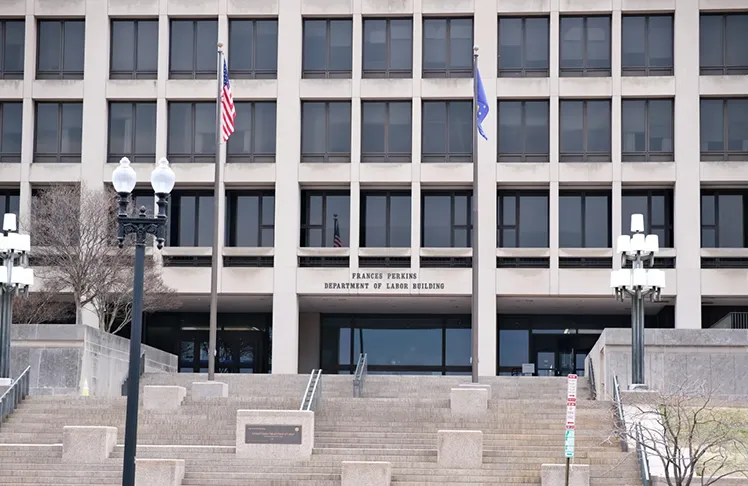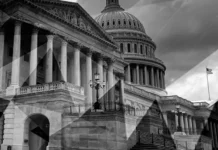
When it announced earlier this week that the Department of Education would hand over several core functions to the Department of Labor and three other federal agencies, the Trump administration took a giant step toward dismantling the Department of Education.
But critics warn that outsourcing the management of more than $31 billion in school funding for low-income districts and college programs to agencies with no education expertise is a recipe for chaos. The Labor Department, they say, has neither the bandwidth nor the expertise to administer programs such as Title I school funding, which is critical for Black and brown K-12 students.
Angela Hanks, former acting assistant secretary of the Labor Department’s Employment and Training Administration during the Biden administration, says the sweeping move by the White House is rife with unforeseen pitfalls. The White House, she says, likely “[hasn’t] contemplated the scale of what they’re doing.”
The Labor Department Isn’t Built for This
The Trump administration is “doing something this massive to a group of students who, by the nature of the programs that they’re enrolled in, are coming disproportionately from low-income backgrounds,” says Hanks, who is now chief of policy for The Century Foundation, a progressive think tank. “Doing anything to disrupt their education without really grappling with what that could mean for them is just terribly reckless.”
The office doesn’t have the manpower to handle $28 billion in grants to K-12 schools or the $3.1 billion allocated to help students finish college, she says. While the Labor Department administers some educational programs, she says, they are primarily geared toward adults looking to advance in the job market.
The Labor Department will now control the Title I program, which funds high-poverty public schools. Over a third of Black students attend these schools, yet their parents and teachers were not notified of this decision and have little insight into how the shift will impact their learning.
A Restructuring That Critics Call ‘Nonsensical’
In announcing the move on Tuesday, the White House says it is “[breaking] up the federal education bureaucracy” by handing over education programs to the Labor Department and different agencies. President Donald Trump campaigned on dismantling the Education Department and signed an executive order to do so in March. But only Congress — which established the cabinet-level department in 1979, in part to help guarantee racial equity in public education — has the power to close it permanently.
Other Education Department responsibilities, including the Office for Civil Rights and the federal student aid program, weren’t affected by Tuesday’s changes. But the White House is reportedly exploring options for those functions.
In a statement, Secretary of Labor Lori Chavez-DeRemer said her department is “committed” to ensuring that “our K-12 and postsecondary education programs prepare students for today and tomorrow’s workforce demands.” Together with Education Secretary Linda McMahon, Chavez-DeRemet said she will “continue advancing President Trump’s vision to deliver effective, streamlined resources, so every student has a clear pathway from education to opportunity.”
But Randi Weingarten, president of the American Federation of Teachers, called the move “an abdication and abandonment of America’s future,” that will “create more confusion, more mistakes and more barriers for people who are just trying to access the support they need,”
Although the AFT has long favored decentralization of Education Department duties, Trump’s approach “is a deliberate diversion of funding streams that have helped generations of kids achieve their American dream. And it will undermine public schools as places where diverse voices come together and where pluralism, the bedrock of our democracy, is strengthened,” he says.
The Department of Labor will administer K-12 programs and most of the postsecondary education grant programs authorized under the Higher Education Act. The Labor Department will combine the Education Department’s programs with its own.
Meanwhile, the Department of the Interior will oversee Native American education programs; Health and Human Services will evaluate whether foreign medical schools meet U.S. accreditation standards and will manage on-campus child-care support for student parents; and the State Department, which administers the Fulbright Program — the government’s foreign exchange program — will align foreign education programs with U.S. national security and foreign policy goals.
Denise Forte, president and CEO of EdTrust, a nonprofit that advocates for educational equity, called the Trump administration’s move “nonsensical.” Forte added that the decision wouldn’t improve students’ preparation for college or the workforce, and would undermine laws that guarantee an equal education for all students.
“Does anyone think burying family engagement and community schools programs in another agency and starving them of expert staff and resources is going to ‘“fix’” the educational system?” she asks. “This administration insults the intelligence of America’s families in implying that it will,” she says.















